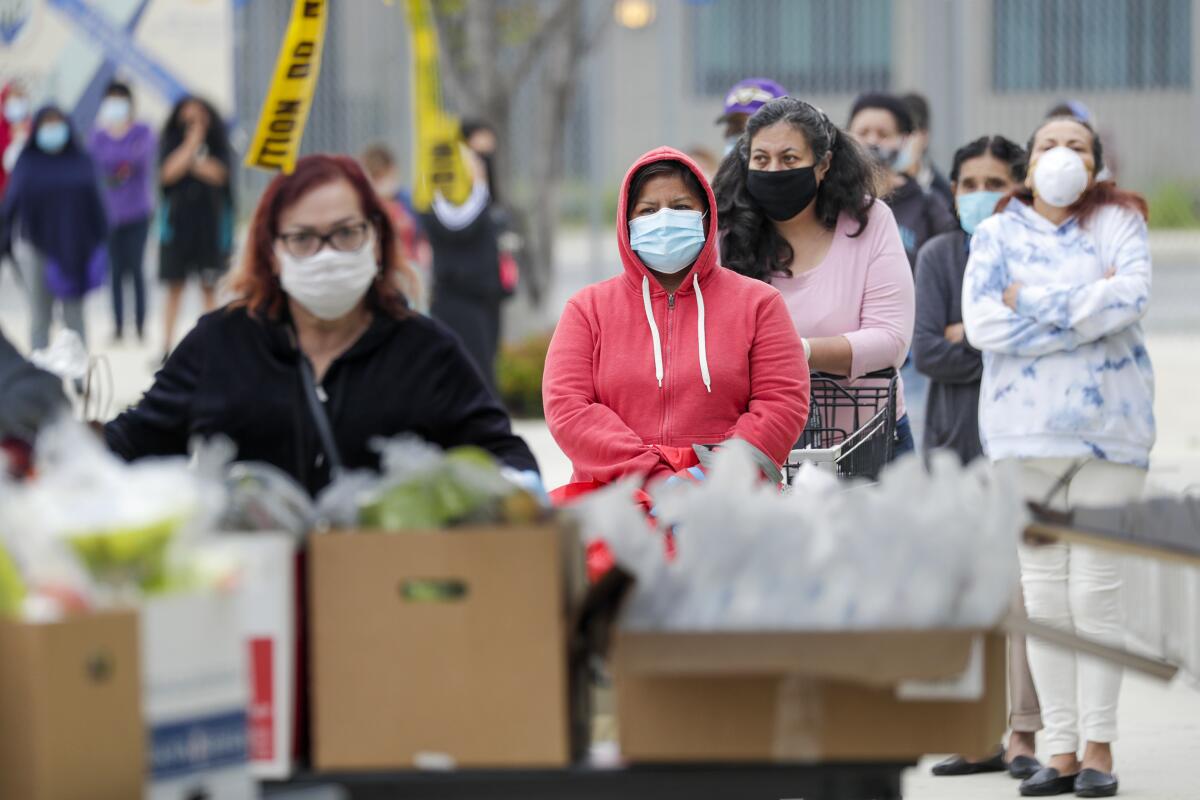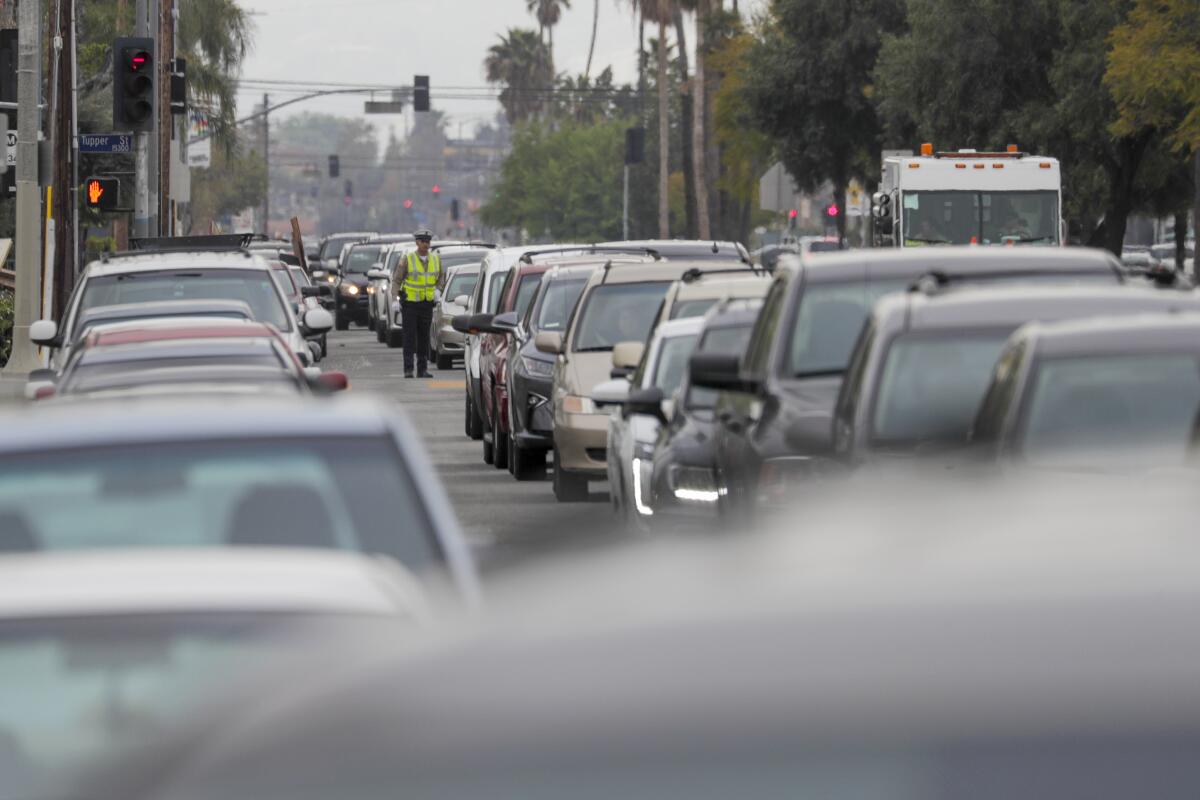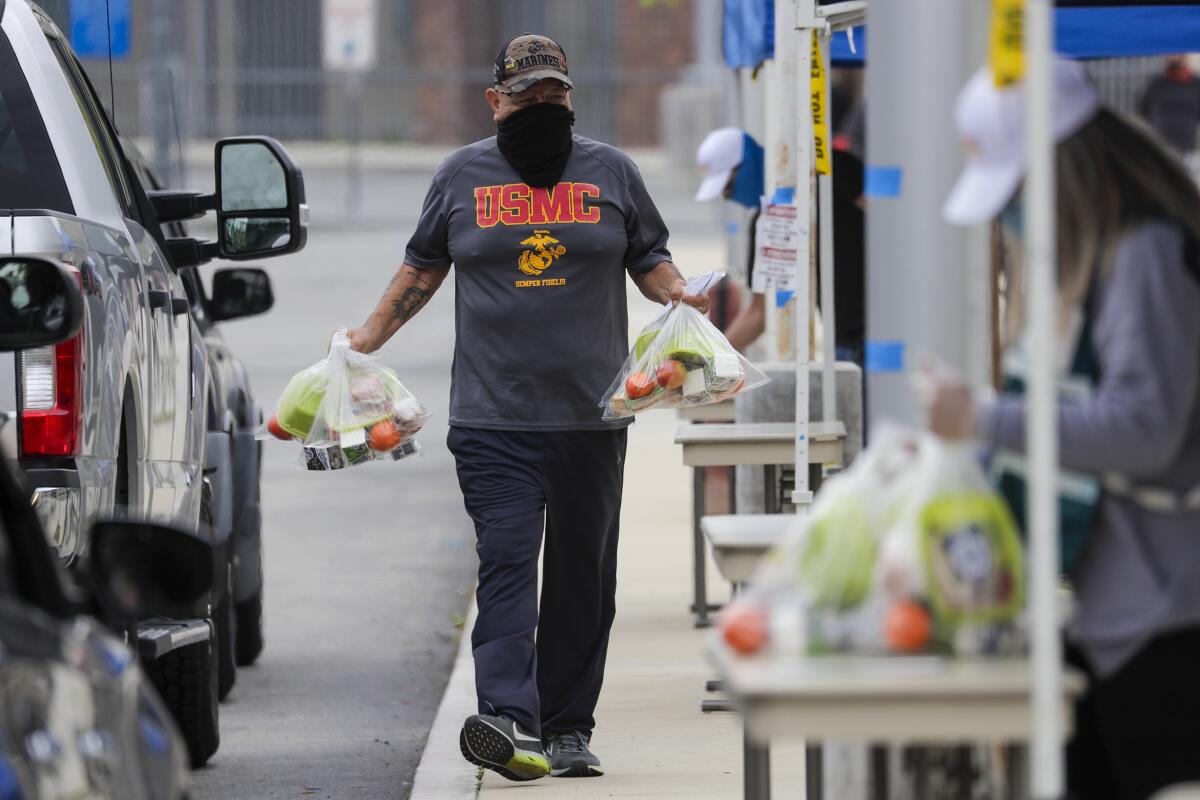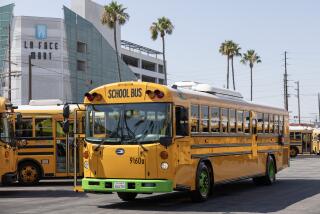L.A. school district confronts $200 million in coronavirus costs and a grim budget future

- Share via
The Los Angeles Unified School District is confronting an estimated $200 million in emergency coronavirus costs — after swiftly moving to provide computers for all students and food for their families — but it’s not clear where crucial additional funding might ultimately come from, Supt. Austin Beutner told The Times.
The mounting expenses will not immediately push the district’s $7.87-billion general fund into insolvency, but the unbudgeted spending probably violates state law requiring school systems to maintain a three-year balanced budget. Although state officials may relax those rules in the current crisis, they have not committed to covering the costs incurred by L.A. Unified — especially with state tax revenue plummeting.
“We know the crisis is having a big impact on the students and families we serve and it’s having a big impact on school budgets as well,” Beutner said.

The priority, he said, has been to address a community crisis — and sort out who pays the bills later, Beutner said.
“The most immediate challenge is to make sure we take care of students, help them continue to learn and help students, families, most in need.”
Beutner also talked about progress in getting students online and frustrations in determining how well they are learning. The district’s latest data indicate that the number of high school students not connected has dropped from 15,000 to 3,000 — less than 3%.
Because the district is loaning out free computers and providing free broadband, extenuating circumstances are likely to be affecting the remainder. One principal told The Times of a family stranded by travel restrictions outside of the United States, although in that case the family still was able to connect online with teachers. Some high school students have significant disabilities that make meaningful online learning virtually impossible. And there are an estimated 17,000 students who are members of homeless families.
The connectivity numbers record how many students have signed on at least once since schools shut down March 13. A deeper dive into the statistics raises additional concerns. About 93% of high school students are logging on at least once a week; about two-thirds are logging on for any given school day.
Even in a regular school setting, Beutner said, it’s difficult to determine when a student is engaged and learning. Distance learning offers helpful data points but eliminates most of the person-to-person feedback loop. He noted that a student reading a book offline could be doing something more valuable than one who is logged into a Zoom session but not able to focus on the content.
“So even some of the ways that we have early on to measure, we’ve got to think carefully about it,” Beutner said. “We’ve got a group working to say which of these are more important, less important. What other things we want to try to understand because the work to engage all of our students — that’s a challenge public education has.”
In addition, Beutner said, the district is developing an initiative that will focus on younger students, who many experts say have more difficulty staying on track with distance learning. That plan may involve hiring more teachers or otherwise lowering class sizes — a striking contrast of financial expectations with Mayor Eric Garcetti, who called Sunday for the furloughs of thousands of city workers.
Budget fallout already is evident in New York City, where Mayor Bill de Blasio has proposed about $827 million in school cost-saving measures, according to the online publication Chalkbeat. The cuts include a hiring freeze and reductions in counseling and operating budgets — raising questions about how well educators can help students catch up after months of lost in-person instruction.

Unlike the budget for New York City schools, which the mayor controls, the L.A. Unified budget — as in all California districts — is controlled by the state. But the picture is nonetheless grim.
California legislative analyst Gabriel Petek predicted a deficit of as much as $35 billion in the near future and an additional $85 billion in fiscal years to come — on par, he said, with California’s budget problems during the Great Recession.
Although there are varying ways to break down the financial crunch, the costs are staggering by any measure — even when accounting for recently approved state and federal aid.
The district’s list of coronavirus emergency expenses, which will be formally released Monday, include:
- $78 million for food aid. This is normally reimbursed by the federal government, but L.A. Unified is technically violating restrictions by feeding adults as well as children.
- $50 million for expanded summer school. This will pay for a “distance learning” program to address learning deficits caused by campus closures.
- $31 million for teacher training to prepare a work force that, by and large, was underprepared to lead instruction online.
- $23 million to connect students from low-income households to the internet.
- $9 million for safety equipment and supplies, mostly in connection to the ongoing grab-and-go food program at 63 campuses.
“We served almost 600,000 meals last Friday,” Beutner said. “To do that properly, we make sure that those who are involved are wearing masks, they’re wearing gloves, that all of the surfaces are disinfected on a continual basis throughout the day.”
He said buying supplies to keep the food distribution lines safe, including the warehouse, is far beyond normal expenses.
The $23-million expenditure for technology vastly understates the full amount spent because the district has shifted the cost of buying computers to voter-approved school construction bonds. That spending shift appears to be legal, but during a recent meeting emerged as a source of discomfort to the Bond Oversight Committee, which nonetheless endorsed the use of the money as an emergency measure.

Beutner said the district has lobbied state leaders to put more money behind their guidance on online learning.
“We’ll see how that pans out in the months and maybe years to come,” he said. “But right now the imperative is to make sure we connect students, provide them with the device, keep them learning.”
More to Read
Sign up for Essential California
The most important California stories and recommendations in your inbox every morning.
You may occasionally receive promotional content from the Los Angeles Times.












